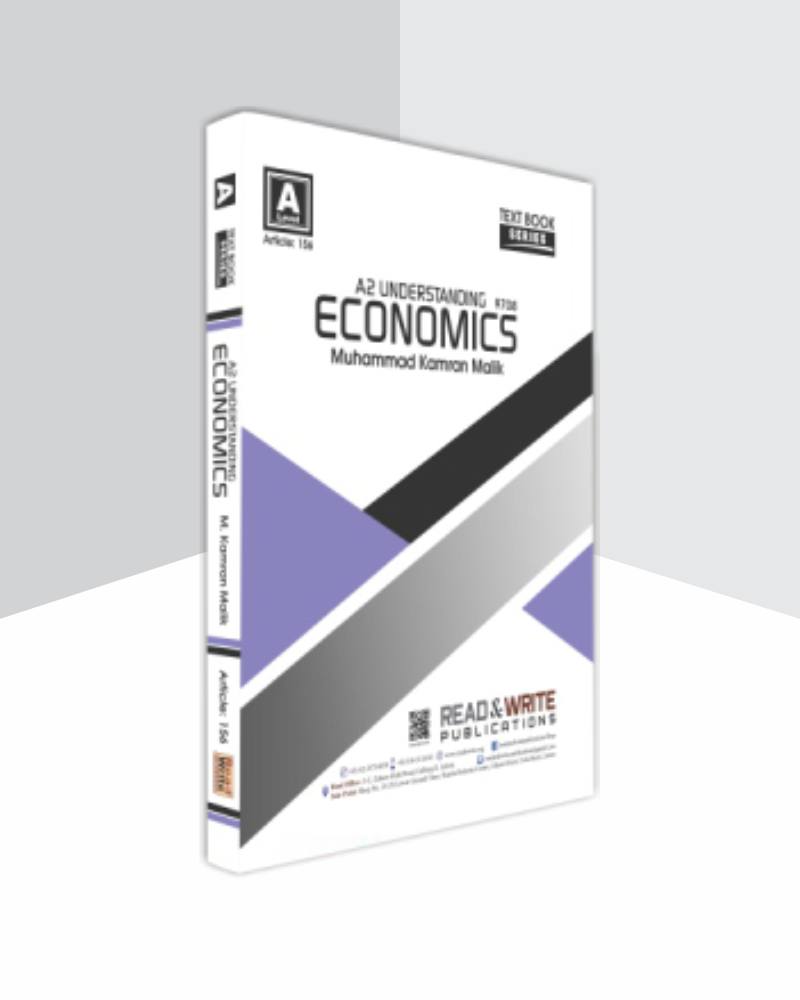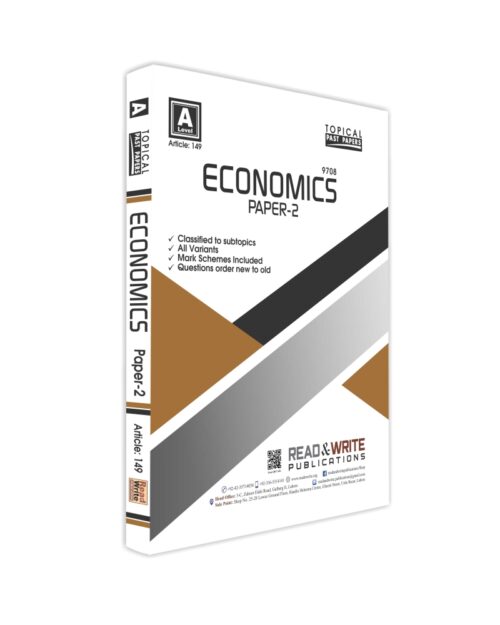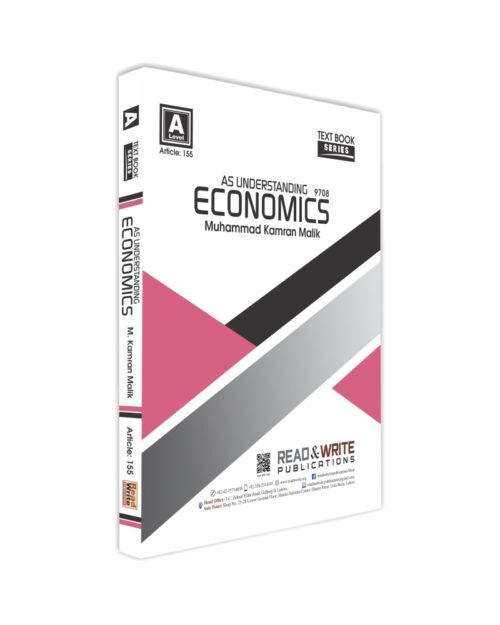| Book Code : | 156 |
|---|---|
| Subject Code : | 9705 |
| Author : | Muhammad Kamran Malik |
| Language : | English |
| Publishers : | Read and Write Publications |
Description
Understanding Economics As Level Book
TABLE OF CONTENTS
Section: 1 Utility
Law of Diminishing Marginal Utility
Law of Equi Marginal Utility
Indifference Analysis
Multiple Choice Questions
Section: 2 Budget Line
Shifts In Budget Line
Multiple Choice Questions
Section: 3 Normal, Inferior and Giffen Goods
Real Income and Substitution Effects of a Price Change
Consumer’s Equilibrium
Income Consumption Curve (ICC)
Impacts of Changes in Price
Multiple Choice Questions
Section: 4 Costs of the businesses
Laws of Variable Proportion
Multiple Choice Questions
Section: 5 Cost Curves in the Long Run
Economies of Scale
Least Cost Combination
Isoquant and Isocost Approach
Minimum Efficient Scale (MES)
Minimum Efficient Scale (MES) And The Size Of Firms
Natural Monopoly
Reasons For The Existence Of Small Firms
Section: 6 Economist’s Versus Accountant’s Definition of Costs
Decisions to Continue or Shutdown Businesses
Multiple Choice Questions
Section: 7 Market Structures
Perfect Competition
Multiple Choice Questions
Section: 8 Monopoly
Multiple Choice Questions
Section: 9 Externalities
Negative Externalities
Positive Externalities
Multiple Choice Questions
Section: 10 Cost Benefit Analysis
Multiple Choice Questions
Section: 11 Comparison between Perfect Competition and Monopoly
Efficiency: Productive and Allocative Efficiency
Remedies to Monopoly Abuse
Multiple Choice Questions
Section: 12 Objectives of Firms
Multiple Choice Questions
Section: 13 Price Discrimination
Multiple Choice Questions
Section: 14 Monopolistic Competition
Oligopoly(Understanding Economics As Level Book)
Price rigidness in Oligopoly
Cartels
Non-Collusive Oligopoly: Game Theory
Prisoner’s Dilemma
Concentration Ratio (Lorenz Curve & Gini Coefficient)
Growth of Firms
Multiple Choice Questions
Section: 15 Contestable Market
Multiple Choice Questions
Section: 16 Factor Market
Marginal Revenue Productivity Theory
Labour Supply Curve
Multiple Choice Questions
Section: 17 Monopsony
Trade Unions(Understanding Economics As Level )
Wage Differentials
Economic Rent
Multiple Choice Questions
Section: 18 National Income Accounting
Multiple Choice Questions
Section: 19 Per Capita Income and Standard of Living
Poverty Trap
Intergenerational Equity
Net Economic Welfare (NEW)
An Introduction of BRICS
Human Poverty Index
Multidimensional Poverty Index (MPI)
Kuznets Curve
Multiple Choice Questions
Section: 20 Equilibrium National Income
Squaring The Economic Cycle(Understanding Economics As Level )
Equilibrium Income (a Graphical Treatment)
Close Economy without Government
Investment Expenditures
Equilibrium National Income
A Situation of Disequilibrium
Multiple Choice Questions
Section: 21 Close Economy with Government
Equilibrium Income in a Close Economy with Government
Equilibrium National Income (Three Sectoral Economy)- Graphical Analysis
Transfer Payment Multiplier
Induced Taxes
Inflationary and Deflationary Gaps
Systems of Taxation
Laffer Curve
Nudge Theory
Means-Tested Benefit
Negative Income Tax
Multiple Choice Questions
Section: 22 Open Economy
Equilibrium Income in an Open Economy
Multiple Choice Questions
Section: 23 Principle of Accelerator
Multiple Choice Questions
Section: 24 Aggregate Demand (AD)
Comparison: Classicals, Monetarists and Keynesians
Aggregate Supply (AS)
Multiple Choice Questions
Section: 25 Liquidity Preference Theory
Loanable Fund Theory
Multiple Choice Questions
Section: 26 Quantity Theory of Money
Credit Creation Process
Multiple Choice Questions
Section: 27 Unemployment
Philips Curve
Supply Side Policies And Natural Rate Of Unemployment
Multiple Choice Questions
Section: 28 Interdependence of Economic Policies
Multiple Choice Questions
Section: 29 Developing Economies
Multiple Choice Questions
Answer Key.
You must be logged in to post a review.







Reviews
There are no reviews yet.